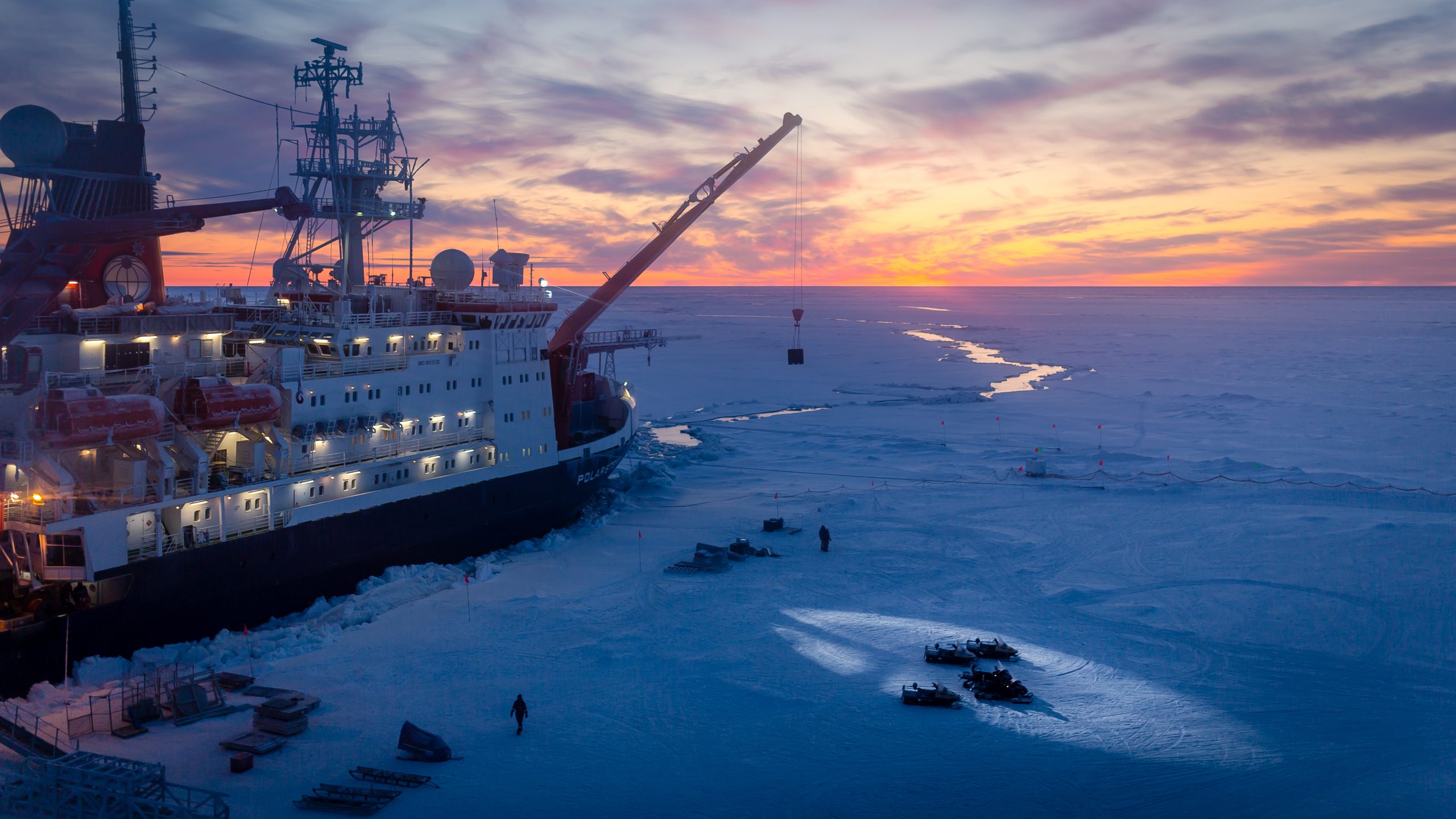
Program Contact
Anne Gold
anne.u.gold@colorado.edu
MOSAiC (Multidisciplinary Drifting Observatory for the Study of Arctic Climate) was a year-long multinational Arctic research expedition involving hundreds of scientists from 19 nations. The expedition, which took place between September 2019 and October 2020, was led by the Alfred Wegener Institute (AWI) with key support from the Cooperative Institute for Research in Environmental Sciences (CIRES), a partnership of the University of Colorado Boulder and the National Oceanic and Atmospheric Administration (NOAA). The expedition is also supported by the U.S. Department of Energy and the National Science Foundation.
In September 2019, the German icebreaker RV Polarstern was intentionally frozen into Arctic sea ice and drifted almost continuously across the Arctic for the next year, leaving only briefly in May 2020 to rendezvous with a resupply ship before returning to the ice. Research camps were constructed on the ice around the ship, and a distributed network of instruments was deployed as far as 40 km away from the ship. The purpose of this research expedition was to collect unprecedented data directly from the Arctic to better understand the biological, physical and chemical processes that couple the Arctic atmosphere, ocean, sea ice and ecosystems. Ultimately, measurements and analyses from this global mission will help scientists improve models and forecasts of local, regional and global weather and climate.
U.S.-based education and outreach efforts for the MOSAiC expedition were led by CIRES and conducted by many of the organizations involved in the expedition. During the course of the expedition, CIRES published a weekly newsletter (MOSAiC Monday) with expedition updates, activities and remote learning resources for kids and adults, stories from scientists, and more. In addition, CIRES educators curated a collection of polar-related activities (many of which were developed by expedition partners), videos, virtual reality experiences and blogs, and wrote brand new MOSAiC curricular units for middle and high school classrooms. All of these MOSAiC and Arctic-related educational materials are freely available to anyone and can be found both at https://mosaic.colorado.edu/education and at https://cires.colorado.edu/outreach/.
Photo credit: Stefan Hendricks
Expedition resources
Additional Info
During the course of the expedition, CIRES published a weekly newsletter (MOSAiC Monday) with expedition updates, activities and remote learning resources for kids and adults, stories from scientists, and more. All of these MOSAiC and Arctic-related educational materials are freely available to anyone and can be found both at https://mosaic.colorado.edu/education and at https://cires.colorado.edu.
Location
online resource
Dates
Ongoing
Public or Private
Public Program (open to the public)
Program Fee
Not Applicable
Sponsoring Units
Research Institutes
- Cooperative Institute for Research in Environmental Sciences (CIRES)
Program Partners
- Alfred Wegener Institute (AWI)
- National Oceanic and Atmospheric Administration (NOAA)
- National Science Foundation (NSF)
- United States Department of Energy (DOE)
- Reach the World
- Exploring by the Seat of Your Pants
- Byrd Polar and Climate Research Center at The Ohio State University
Audiences Served
- Adult Learners
- Children & Youth (outside school)
- Families
- General Public
- International
- Rural Communities
- Students - Elementary School
- Students - Homeschooled
- Students - High School
- Students - Middle School
- Teachers - Elementary School
- Teachers - Middle School
- Teachers - High School
Topics:
- Climate Change/Global Warming
- Biological Sciences
- Informal and Community Education
- Chemistry
- Business Analysis/Forecasting
- Ecosystems
- Geology
- Environmental Studies
- Educational Research and Resources
- K-12 Education
- Meteorology & Atmospheric Sciences
- Engineering
- Environment and Sustainability
- Natural Geography
- STEM (Science, Technology, Engineering, Math) Education
- Physics
- Life Sciences
- Physical Sciences